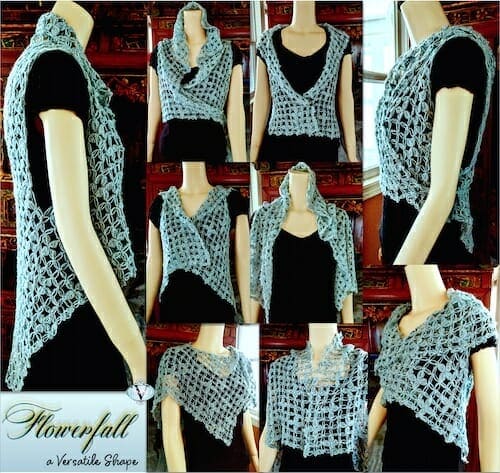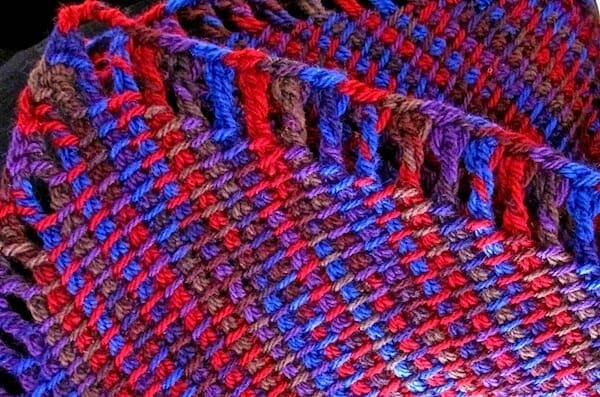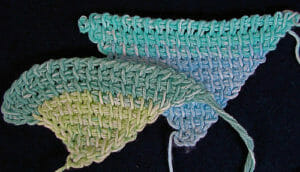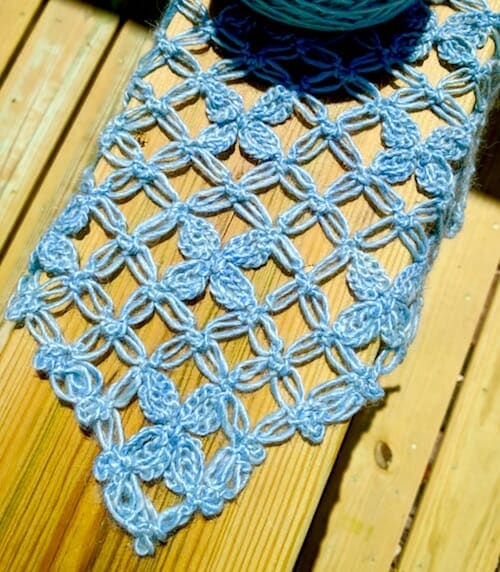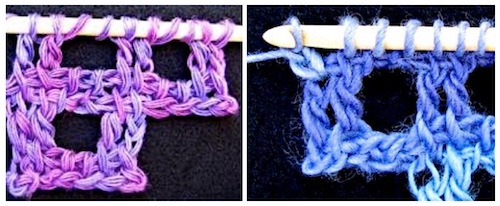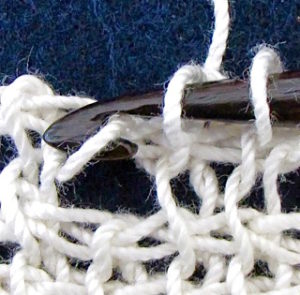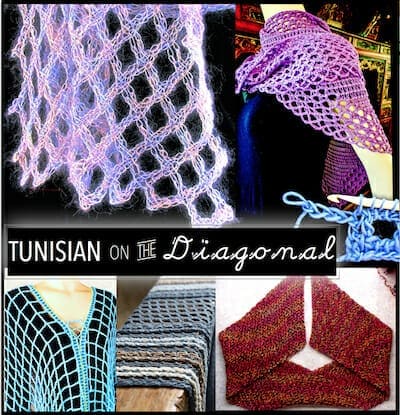
Final update of this page is in progress, please check back. View the high-res image. This is a conveniently clickable group of things I mention and display in Tunisian Crochet on the Diagonal classes. I teach the next one on July 27, 2018 in Portland OR. I show a huge amount of published and unpublished crochet designs in this class including new, never seen! Each illustrates the stitches and techniques learned. — Vashti Braha
Thinking of signing up for this class? I wrote New Angle on Diagonal Tunisian, and newsletter issue #93, with you in mind.
Diagonal Tunisian Crochet Patterns
- My published Tunisian Crochet downloadable patterns
- Some of my not-yet published Tunisian Crochet projects
 Excerpt from the Tunisian Crochet on the Diagonal class handout (View full size).
Excerpt from the Tunisian Crochet on the Diagonal class handout (View full size).
Recommended Issues of Vashti’s Crochet Inspirations Newsletter
- Issue #48: Diagonal Tunisian Crochet Discovery
- Issue #64 Dramatic Tunisian Edge Increases
- Issue #68 Filet Net Textures, Rotated
- Issue #22 Crochet That Pours
- Issue #37 When Stitches Lean
Blogged It
- Yveline: First Look (June 2018)
- The Graven story (Fall 2017)
- Five Basic Rules in Tunisian Crochet Patterns
- Tunisian Crochet Lace: New Habits (for Tunisian lace beginners)
- Crocheting a Triangular Shawl Point to Point
- My Favorite Way to Add a Professional Look Fast (blocking lace with mist as you go)
- A Powerful Tunisian Crochet Stitch to Love (the Tunisian Extended Knit Stitch)
- Tunisian Crochet Lace Scarf Preview (Warm Aeroette, 2014)
Photo Albums & Inspiration Boards
- Online photo album for this class 2016 to the present (Flickr).
- Corner-Start and Bias Crochet inspiration board (Pinterest).
- To Try with Tunisian Crochet Nets inspiration board (Pinterest)
- Wearable Simple Shapes to Crochet inspiration board (Pinterest).
- Color Blocks of Simple Textures inspiration board (Pinterest).
- Vashti’s Crochet Classes inspiration board (Pinterest).
Recommended Sites
All about the “Half-Hitch” stitch
- Quick how-to video (Backward Loop Cast On is the same as a half hitch stitch.)
- See the CAL discussion thread listed above.
Getting Geeky About the Geometry of Diagonal Tunisian
- Hypotenuse Calculator
- Create-Your-Own Graph Paper
Any Books on Diagonal Tunisian?
Not that I’m aware of. Here are my three favorite Tunisian crochet references in print:
- 2008: Tunisian Crochet Patterns 100, Nihon Amimono Bunka Kyo-kai, Japan ISBN 978-4-529-04484-4
- 2000 (1991), Rebecca Jones: Tricot Crochet The Complete Book, Lacis Pubs., Berkeley CA. ISBN 978-1-891656-28-6
- 2004, Angela “ARNie” Grabowski: Encyclopedia of Tunisian Crochet, LoneStar Abilene Pubg LLC, TX. ISBN 978-0-974972-55-8
The Five Peaks Tunisian Crochet Shawl design in the news & around the ‘net
I created this resource list for my students & others to explore the Five Peaks Tunisian crochet shawl, and similar start-in-a-corner, edge-as-you-go L-shaped wraps.
- Its Ravelry design page (best headquarters for everything concerning the pattern).
- Its Ravelry CAL discussion thread.
- Interweave Crochet magazine issue in which the original version of the pattern first appeared: Spring 2010 (back issue available on CD?).
- Downloadable pdf of the original magazine version of the pattern in the Interweave Pattern Shop.
- Blog post about the design by Marcy, editor of Interweave Crochet magazine
- My blog post about the development of this design.
- My blog post about the discovery that made the Five Peaks Tunisian Crochet Shawl possible
- Online photo set of my studio and process shots of the Five Peaks Shawls
Inspiring Features, Examples, and Variations of the Five Peaks L-Shape
- Doris Chan’s Fairlane
- Nicky Epstein’s __
- Barry Klein’s _
